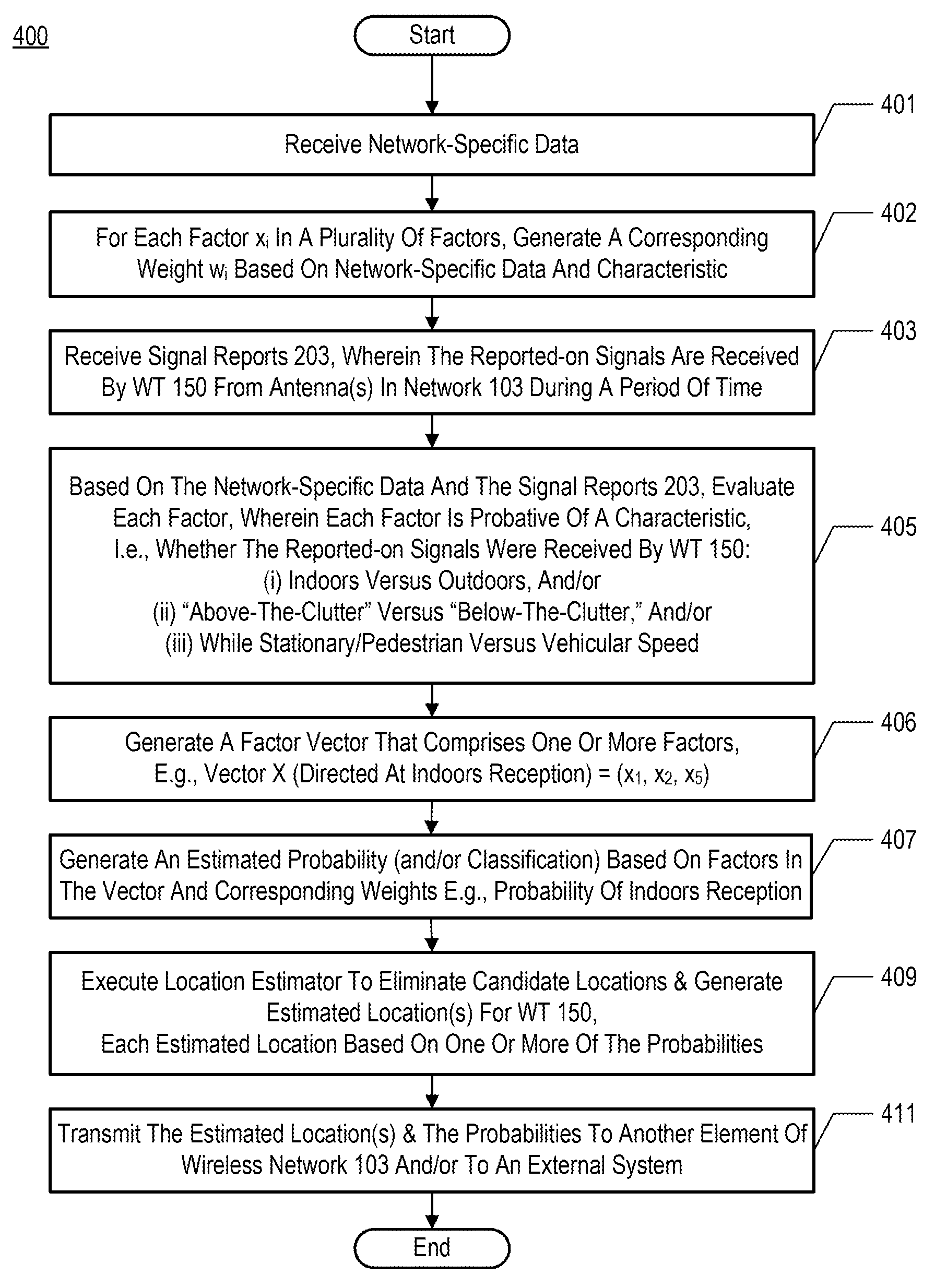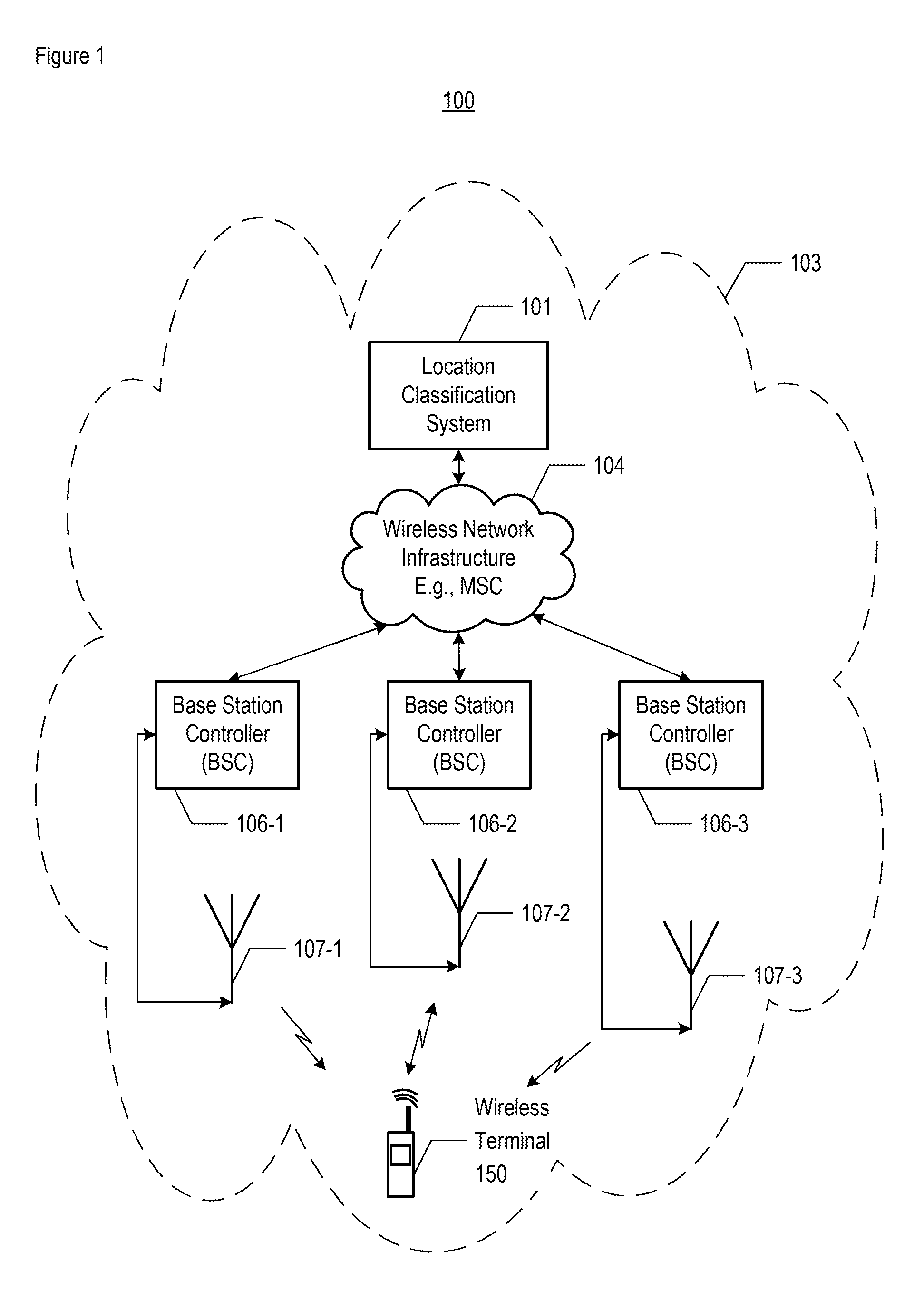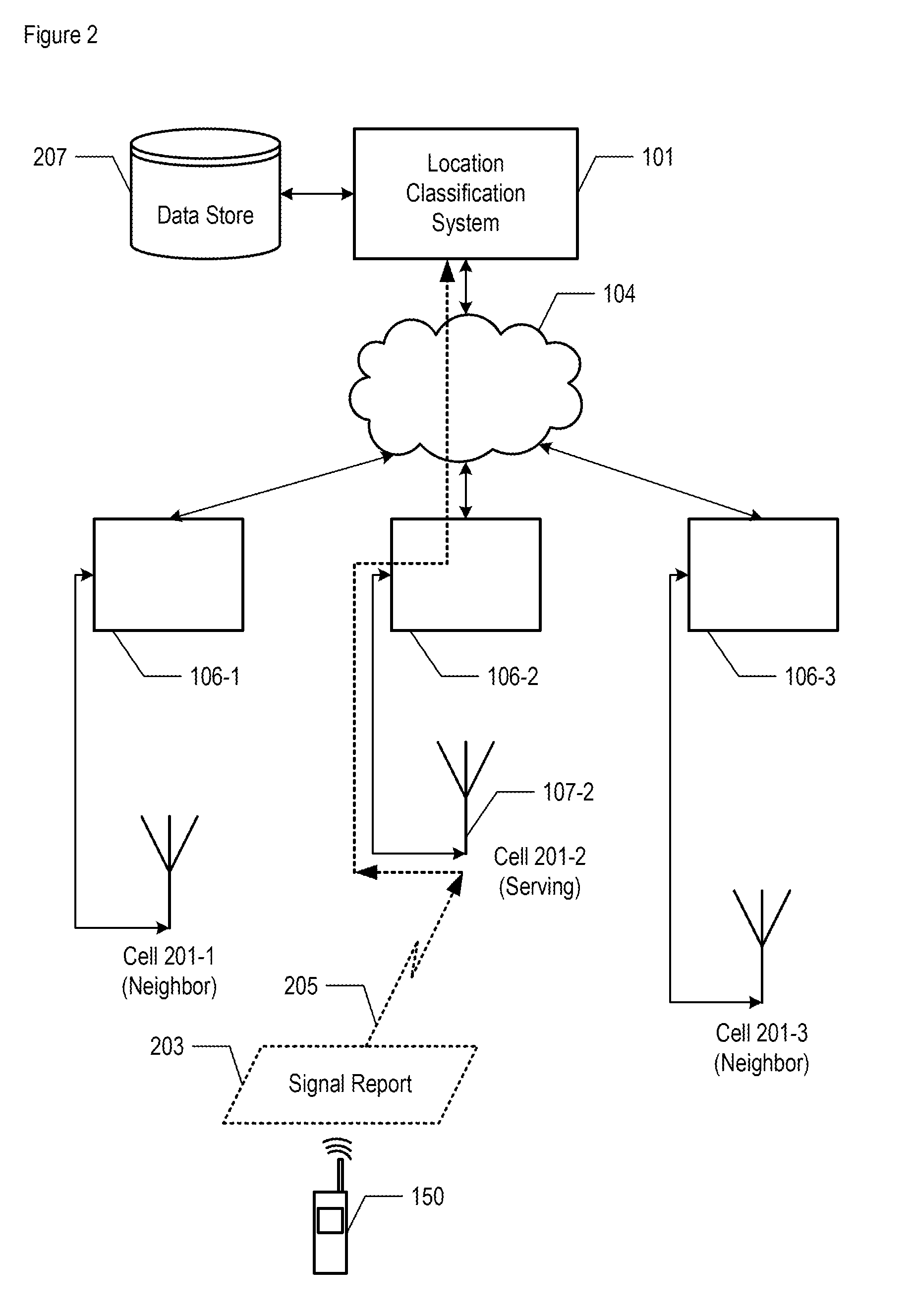Estimating whether a wireless terminal is indoors versus outdoors using probabilities and classifications
a wireless telecommunications terminal and probability estimation technology, applied in the field of wireless networks, can solve the problem that the neighboring cell number cannot be guaranteed, and achieve the effect of increasing accuracy and improving quality
- Summary
- Abstract
- Description
- Claims
- Application Information
AI Technical Summary
Benefits of technology
Problems solved by technology
Method used
Image
Examples
Embodiment Construction
[0040]For the purposes of this specification, the following terms and their inflected forms are defined as follows:[0041]The term “location” is defined as a zero-dimensional point, a one-dimensional line, a two-dimensional area, or a three-dimensional volume. Thus, a location can be described by a street address, or geographic coordinates, or by a perimeter, or any combination thereof, without limitation.[0042]The term “wireless terminal” is referred to herein synonymously as “wireless telecommunications terminal” or “mobile phone” or “mobile unit” or “wireless user endpoint” or “wireless user equipment.” A wireless terminal is defined as any type of wireless terminal, such as a cellular telephone (e.g., GSM, UMTS, CDMA, TDMA, 3GPP, etc.), smartphone (e.g., iPhone, Android, Blackberry, etc.), mobile tablet (e.g., iTouch, Kindle Fire, iPad, etc.), or a combination thereof, or another mobile unit served by a wireless network.[0043]The term “factor” is associated with reported-on wirel...
PUM
 Login to View More
Login to View More Abstract
Description
Claims
Application Information
 Login to View More
Login to View More - R&D
- Intellectual Property
- Life Sciences
- Materials
- Tech Scout
- Unparalleled Data Quality
- Higher Quality Content
- 60% Fewer Hallucinations
Browse by: Latest US Patents, China's latest patents, Technical Efficacy Thesaurus, Application Domain, Technology Topic, Popular Technical Reports.
© 2025 PatSnap. All rights reserved.Legal|Privacy policy|Modern Slavery Act Transparency Statement|Sitemap|About US| Contact US: help@patsnap.com



